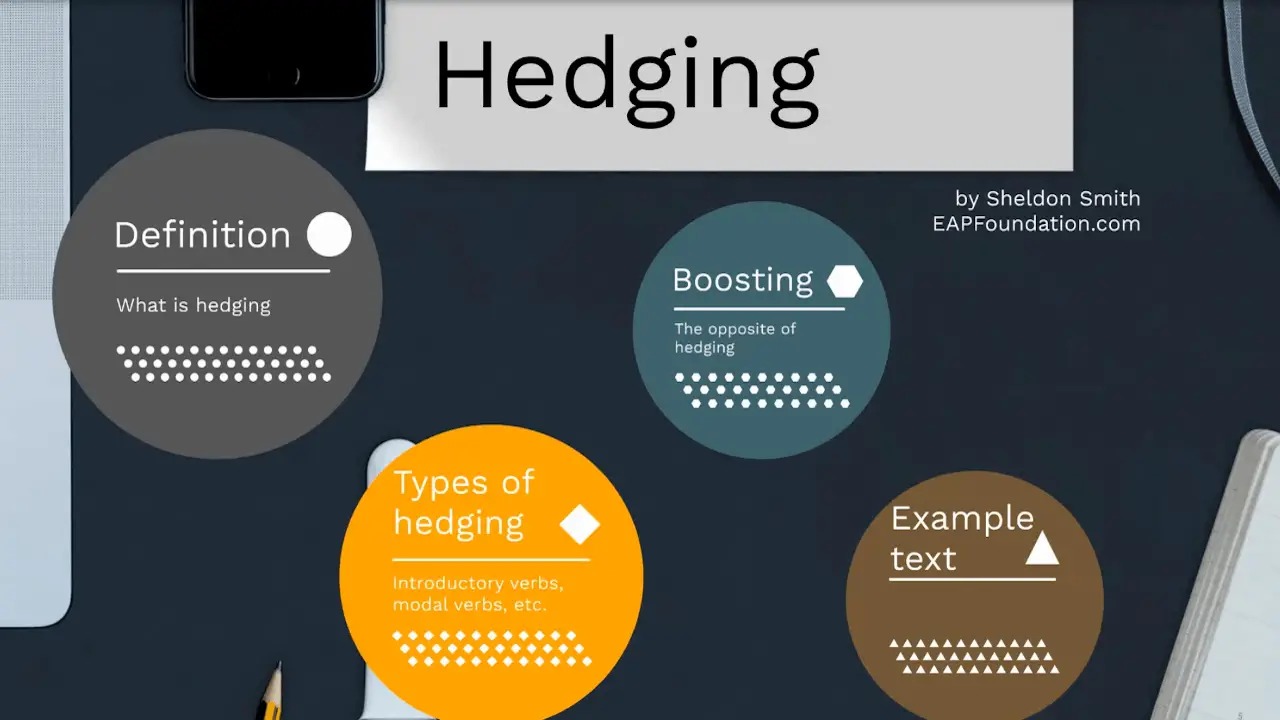

Finance
Why Should I Do Gamma Hedging
Published: January 15, 2024
Discover the importance of gamma hedging in the world of finance and how it can help manage risk effectively. Explore why gamma hedging is essential for financial success.
(Many of the links in this article redirect to a specific reviewed product. Your purchase of these products through affiliate links helps to generate commission for LiveWell, at no extra cost. Learn more)
Table of Contents
Introduction
Welcome to the world of gamma hedging! In the complex and ever-changing landscape of finance, gamma hedging has emerged as a vital tool for managing risk and optimizing investment strategies. Whether you’re an experienced trader or simply interested in understanding the dynamics of the market, gamma hedging is worth exploring.
Before diving into the intricacies of gamma hedging, let’s start with a brief overview. In basic terms, gamma refers to the rate of change of an option’s delta in relation to the underlying asset’s price movement. Delta, in turn, measures the sensitivity of an option’s price to changes in the underlying asset’s price. With gamma hedging, traders aim to protect their positions and reduce risks associated with changes in market conditions.
Hedging, as a general concept, involves taking on a position or strategy to offset potential losses in another position. By implementing gamma hedging techniques, traders seek to maintain a more balanced risk profile and protect themselves from adverse market movements. This approach is particularly crucial in highly volatile markets, where sudden price changes can significantly impact investment portfolios.
Gamma hedging is commonly used in options trading, where options are financial derivatives that provide the right, but not the obligation, to buy or sell an underlying asset at a predetermined price within a specified period. Options come in two basic types: calls, which give the holder the right to buy, and puts, which give the holder the right to sell. Gamma hedging is especially relevant for traders in options contracts due to the unique characteristics and risks associated with these instruments.
As we delve deeper into the world of gamma hedging, we will explore the reasons for its importance, the strategies involved, and the benefits and risks associated with this approach. Through real-life examples, we will see how gamma hedging can be effectively applied to mitigate risks and enhance investment performance. By the end of this article, you’ll have a solid understanding of gamma hedging and its potential impact on your trading activities.
So, buckle up and let’s explore how gamma hedging can help you navigate the exciting and dynamic world of finance!
Definition of Gamma
In the world of options trading, gamma is a crucial concept that measures the rate of change of an option’s delta in response to changes in the price of the underlying asset. In simpler terms, gamma indicates how sensitive an option’s price is to fluctuations in the underlying asset’s price.
To understand gamma, we must first delve into the concept of delta. Delta measures the change in an option’s price in relation to a $1 change in the price of the underlying asset. Delta ranges between 0 and 1 for call options (0 indicating no price movement and 1 indicating a price movement in sync with the underlying asset), while for put options, delta ranges between 0 and -1 (-1 indicating an inverse price movement).
Gamma, on the other hand, measures the change in an option’s delta for a change in the underlying asset’s price. It effectively quantifies the curvature of an option’s price curve and indicates how delta will change as the underlying asset’s price moves. If an option has a high gamma, it means that its delta will change significantly with small price movements in the underlying asset. Conversely, an option with low gamma will experience less delta change for the same price movement in the underlying asset.
The relationship between gamma and delta is crucial in understanding the dynamics of options trading. As the underlying asset’s price fluctuates, the delta of an option changes, resulting in shifts in the option’s price. Gamma highlights the speed at which these delta changes occur. In essence, gamma is a measure of risk associated with changes in the underlying asset’s price and its impact on options positions.
It’s important to note that gamma is not a constant value but varies throughout the life of an option. As an option moves closer to its expiration date, its gamma tends to increase, indicating higher sensitivity to changes in the underlying asset’s price. This effect is particularly pronounced for at-the-money options, where the strike price is close to the current price of the underlying asset.
Traders often use gamma to evaluate the risk associated with their options positions. Higher gamma implies greater price volatility and potential higher profits or losses. Additionally, understanding gamma can help traders make informed decisions about delta adjustments, hedging strategies, and overall risk management.
Now that we have a clearer understanding of what gamma means in options trading, let’s explore the importance of hedging to better appreciate the role of gamma hedging in managing risk and optimizing investment strategies.
Importance of Hedging
Hedging plays a crucial role in the world of finance, serving as a means to protect investments from potential losses arising from adverse market movements. In the context of options trading, where gamma hedging is commonly employed, the significance of hedging becomes even more pronounced.
One of the primary reasons for the importance of hedging is to mitigate the risks associated with volatile market conditions. Financial markets are inherently unpredictable, and sudden price fluctuations can have a significant impact on investment portfolios. By implementing hedging strategies, traders can offset potential losses by taking on positions that provide protection against adverse price movements.
Another key benefit of hedging is the ability to maintain a more balanced risk profile. Instead of relying solely on the direction of the market, hedging allows traders to manage risks more effectively. By diversifying their positions and adopting hedging techniques, traders can protect themselves from extreme market swings, ensuring a more stable investment performance.
Hedging also empowers traders to optimize their investment strategies. By hedging their positions, traders can take advantage of various market conditions and capitalize on opportunities that arise. Hedging enables traders to maximize their potential gains while minimizing potential losses, creating a more favorable risk-reward balance.
Furthermore, hedging can enhance overall portfolio management. By effectively hedging positions, traders can align their portfolios with their risk tolerance and investment objectives. Hedging strategies allow for better risk control, ensuring that portfolios are structured in a way that balances potential returns with an acceptable level of risk exposure. This, in turn, can contribute to increased confidence and peace of mind for traders.
Additionally, hedging can provide insurance against unexpected events or market shocks. By hedging positions, traders can protect themselves from unforeseen circumstances that can disrupt the market. This risk mitigation can help preserve capital and provide stability in times of market turbulence or economic uncertainty.
The importance of hedging cannot be overstated, especially in the complex and rapidly-changing financial landscape. Whether it’s protecting against volatile market conditions, maintaining a balanced risk profile, optimizing investment strategies, or providing insurance against unexpected events, hedging is a vital tool for investors and traders alike.
With a solid understanding of the importance of hedging, let’s dive into the world of gamma hedging and explore how it can be effectively utilized to manage risks and enhance investment performance.
Explanation of Gamma Hedging
Gamma hedging is a risk management technique employed by traders in options markets to mitigate the risks associated with changes in the underlying asset’s price. It involves adjusting options positions to maintain a desired level of exposure to price movements and to offset potential losses resulting from gamma volatility.
The primary objective of gamma hedging is to maintain a balanced risk profile by continuously adjusting the gamma exposure of a portfolio. This is achieved by buying or selling options contracts, known as dynamic hedging, to offset changes in the overall gamma. By doing so, traders aim to neutralize the impact of gamma on their positions and reduce the potential for losses resulting from unfavorable market movements.
To understand gamma hedging, it’s important to grasp the relationship between gamma, delta, and the underlying asset’s price. Delta measures the sensitivity of an option’s price to changes in the underlying asset’s price, while gamma measures the rate of change of delta with respect to changes in the underlying asset’s price.
When traders initially establish options positions, their delta and gamma exposure is typically static and fixed. However, as the underlying asset’s price changes, the delta and gamma values of the options positions also change. This means that the initial risk profile of the portfolio can be altered by market movements.
In gamma hedging, traders dynamically adjust their options positions to maintain a desired delta and gamma exposure. When the underlying asset’s price increases, the gamma of call options becomes more positive and the gamma of put options becomes more negative. To hedge this gamma exposure, traders may buy additional call options or sell existing put options. Conversely, when the underlying asset’s price decreases, the gamma of call options becomes more negative and the gamma of put options becomes more positive. In this case, traders may buy more put options or sell call options to adjust their gamma exposure.
The goal of gamma hedging is to offset the changes in gamma, thereby maintaining a balanced risk profile. By continuously adjusting options positions in response to market movements, traders can minimize the impact of gamma fluctuations on their portfolios and protect themselves from adverse price movements.
It’s worth noting that gamma hedging is an ongoing and iterative process. Traders need to actively monitor the gamma exposure of their portfolios and make adjustments accordingly. The frequency of adjustments will depend on factors such as market volatility, option maturities, and the desired risk tolerance of the trader.
Overall, gamma hedging is a powerful risk management technique that allows traders to navigate the complexities of options trading. By effectively managing gamma exposure, traders can reduce the potential for losses and optimize their investment performance.
Now that we understand the concept of gamma hedging, let’s explore the reasons why traders choose to implement this strategy.
Reasons to Use Gamma Hedging
Gamma hedging is a popular and effective strategy in options trading due to several compelling reasons. Traders employ gamma hedging techniques to manage risk, protect their positions, and optimize their investment strategies. Here are the key reasons why traders choose to use gamma hedging:
- Risk Management: One of the primary reasons to use gamma hedging is to manage risk effectively. Options positions are exposed to various risks, including changes in the underlying asset’s price, volatility, and time decay. Gamma hedging allows traders to offset the impact of these risks by continually adjusting their options positions. By actively managing gamma exposure, traders can reduce the potential for losses and protect their portfolios.
- Minimize Impact of Price Volatility: Options prices are influenced by price movements in the underlying asset. Gamma, as a measure of price sensitivity, can reflect significant changes in option prices when the underlying asset’s price is volatile. Gamma hedging helps traders minimize the impact of price volatility by adjusting their options positions in response to changes in the underlying asset’s price. By doing so, they can protect themselves from sudden and adverse price movements.
- Optimize Option Trading Strategies: Gamma hedging allows traders to optimize their option trading strategies. By actively managing the gamma exposure of their portfolios, traders can adjust their positions to align with their market forecasts and investment objectives. Gamma hedging provides the flexibility to take advantage of different market conditions and potentially enhance profits. For example, traders can adjust their positions to increase their gamma exposure in anticipation of volatility or to reduce gamma exposure in more stable market conditions.
- Align with Risk Tolerance: Every trader has a different risk tolerance level. Gamma hedging allows traders to customize their risk exposure based on their risk tolerance. By adjusting their options positions to maintain a desired gamma exposure, traders can align their portfolios with their risk preferences. This enables them to actively manage their risk while still participating in options trading and potential profit opportunities.
- Enhance Investment Performance: Gamma hedging strategies can contribute to enhanced investment performance. By managing risk effectively and optimizing options positions, traders can potentially increase the probability of achieving their desired investment returns. By using gamma hedging as part of a holistic investment approach, traders can stay resilient in the face of market uncertainties and take advantage of opportunities to generate profits.
These reasons highlight the importance and advantages of employing gamma hedging techniques in options trading. By actively managing gamma exposure, traders can mitigate risks, minimize the impact of price volatility, optimize their trading strategies, align with their risk tolerance, and potentially enhance their investment performance.
Now that we understand the reasons to use gamma hedging, let’s explore the benefits and risks associated with employing this strategy.
Benefits and Risks of Gamma Hedging
Gamma hedging, as a risk management strategy in options trading, offers a range of benefits and involves certain risks that traders should be aware of. Understanding these advantages and potential drawbacks is essential for effectively implementing gamma hedging techniques. Let’s explore the benefits and risks associated with gamma hedging:
Benefits of Gamma Hedging:
- Risk Mitigation: The primary benefit of gamma hedging is the ability to mitigate risks associated with adverse price movements. By adjusting options positions to manage gamma exposure, traders can offset potential losses resulting from changes in the underlying asset’s price. This risk management approach helps protect investment portfolios and preserves capital.
- Flexibility: Gamma hedging provides traders with flexibility in adapting to changing market conditions. Traders can adjust their options positions as needed to align with their market forecasts and investment strategies. This flexibility allows for potential optimization of trading strategies and the ability to capitalize on various market opportunities.
- Improved Profit Potential: Effective gamma hedging techniques can enhance profit potential by managing risk and reducing losses. By mitigating the impact of price volatility and unexpected market movements, traders can position themselves for more favorable outcomes. Gamma hedging enables traders to strategically adjust their positions to maximize potential gains.
- Increased Stability: Gamma hedging can contribute to increased stability in investment portfolios. By actively managing gamma exposure, traders can create a more balanced risk profile. This balance helps reduce the impact of sudden price movements, resulting in a more stable investment performance over time.
- Customized Risk Exposure: Gamma hedging allows traders to tailor their risk exposure to their risk tolerance and investment objectives. By adjusting options positions to maintain a desired gamma exposure, traders can align their portfolios with their individual risk preferences. This customization helps traders feel more in control of their risk management strategies.
Risks of Gamma Hedging:
- Implementation Complexity: Gamma hedging techniques require a solid understanding of options pricing, market dynamics, and risk management principles. Traders need to possess the knowledge and skills to effectively implement and manage gamma hedging strategies. Lack of expertise or miscalculations may result in suboptimal results or even losses.
- Transaction Costs: Adjusting options positions to hedge gamma exposure involves transaction costs, such as commissions and bid-ask spreads. These costs can eat into potential profits and impact overall investment returns. Traders should carefully consider the impact of transaction costs on their strategies and ensure that the benefits of gamma hedging outweigh these costs.
- Dynamic Adjustments: Gamma hedging requires ongoing monitoring and frequent adjustments to options positions as market conditions change. This dynamic nature of gamma hedging can be time-consuming and may require constant attention and analysis. Traders should be prepared to allocate sufficient time and resources to effectively manage gamma hedging strategies.
- Potential Losses: While gamma hedging is intended to mitigate losses, it does not eliminate the possibility of losses entirely. Factors such as rapid market fluctuations, unexpected events, or improper implementation of gamma hedging strategies can still result in losses. Risk can never be completely eliminated, and traders should be prepared for the potential risks associated with gamma hedging.
Traders should weigh the benefits and risks of gamma hedging before implementing this strategy. It is advisable to thoroughly analyze market conditions, monitor positions regularly, and continually improve risk management techniques to minimize potential drawbacks and maximize the advantages of gamma hedging.
Next, let’s explore some common strategies used in gamma hedging.
Strategies for Gamma Hedging
Gamma hedging involves implementing various strategies to manage the risks associated with changes in the underlying asset’s price. Traders employ these strategies to maintain a desired gamma exposure and offset potential losses. Here are a few common strategies used in gamma hedging:
- Dynamic Delta Hedging: Dynamic delta hedging is a commonly used strategy in gamma hedging. It involves adjusting options positions to maintain a desired delta and gamma exposure. When the underlying asset’s price increases, traders may buy more call options or sell put options to increase their positive gamma exposure. Conversely, when the underlying asset’s price decreases, traders may buy more put options or sell call options to increase their negative gamma exposure. By continuously adjusting the options positions, traders aim to neutralize the impact of gamma on their portfolios.
- Gamma Scalping: Gamma scalping is a strategy where traders actively seek to profit from changes in gamma. Traders may take advantage of volatile price movements by buying or selling options to exploit changes in gamma and delta. For example, if the underlying asset’s price experiences a significant move, traders may adjust their options positions to capture potential profits resulting from changes in gamma. Gamma scalping requires close monitoring of options prices and market conditions, as well as quick decision-making to seize opportunities.
- Long Gamma/Short Gamma Strategies: Traders can adopt long gamma or short gamma strategies based on their market forecasts and risk appetite. A long gamma strategy involves positioning the portfolio to benefit from an increase in volatility or significant price movements. Traders may buy options to increase their positive gamma exposure and potentially profit from increased price volatility. On the other hand, a short gamma strategy involves positioning the portfolio to benefit from stable market conditions with limited price movements. Traders may sell options to increase their negative gamma exposure and generate income from the premiums collected.
- Spread Strategies: Spread strategies involve trading multiple options contracts simultaneously to manage gamma exposure. Traders may employ vertical spreads, horizontal spreads, or diagonal spreads to achieve a desired risk-reward profile. These strategies aim to reduce the overall gamma exposure of the portfolio while maintaining a position that takes advantage of specific market conditions or price movements. Spread strategies offer a way to manage risk more efficiently by combining different options positions.
- Gamma-Neutral Portfolio: A gamma-neutral portfolio is constructed by offsetting positive and negative gamma positions. By carefully choosing options contracts with opposing gamma values, traders can create a portfolio with a near-zero or neutral gamma exposure. This strategy helps minimize the impact of price movements on the portfolio and reduces the potential for losses resulting from changes in gamma.
These are some common strategies used in gamma hedging. Traders often combine multiple strategies and adapt them to their unique risk tolerance, market outlook, and investment objectives. It’s important to note that implementing gamma hedging strategies requires careful analysis, constant monitoring, and the ability to adjust positions in real-time.
Now that we have explored various strategies for gamma hedging, let’s examine real-life examples of how gamma hedging is used in practice.
Examples of Gamma Hedging in Practice
To better understand how gamma hedging is applied in real-life scenarios, let’s explore a couple of examples where traders use gamma hedging strategies to manage risk and optimize their investment performance.
Example 1: Equity Options Trading
Suppose a trader holds a portfolio of equity options in a highly volatile market. As the underlying stock price experiences significant fluctuations, the gamma exposure of the options positions changes, posing a risk of potential losses. To manage this risk, the trader employs dynamic delta hedging as a gamma hedging strategy.
When the stock price increases, the delta of call options becomes more positive, and the delta of put options becomes more negative. To hedge the gamma exposure resulting from these changes, the trader might sell a portion of the call options and buy additional put options. This adjustment helps maintain a desired delta and gamma exposure, reducing the potential impact of adverse price movements on the portfolio.
Conversely, when the stock price decreases, the trader may buy more call options and sell some of the put options to adjust the gamma exposure. By making these dynamic adjustments, the trader aims to neutralize the impact of gamma and protect the portfolio from losses.
Example 2: Commodity Futures Market
Consider a trader who is actively trading commodity futures contracts in a volatile market. The trader anticipates a significant increase in price volatility and wants to capitalize on potential profit opportunities while managing risk effectively using gamma hedging.
The trader implements a long gamma strategy by buying call options on the corresponding commodity futures contracts. This strategy provides positive gamma exposure, allowing the trader to benefit from increased price volatility. As the price of the commodity experiences higher fluctuations, the gamma exposure of the options increases, resulting in potential profit opportunities for the trader.
If the market turns out to be less volatile than expected, the trader may adjust the options positions to maintain a desired gamma exposure or could employ a spread strategy by selling options to reduce exposure. These adjustments allow the trader to dynamically manage risk and optimize investment performance based on changing market conditions.
These examples illustrate how gamma hedging is used in practice to manage risk and enhance investment performance. Traders employ dynamic delta hedging, gamma scalping, spread strategies, and other techniques to adapt to different market scenarios, optimize strategies, and protect their portfolios.
Now that we have seen examples of gamma hedging in action, let’s summarize our key findings.
Conclusion
Gamma hedging is a valuable and essential strategy in the world of options trading. By actively managing gamma exposure and making adjustments to options positions, traders can mitigate risks, protect their portfolios, and optimize their investment strategies. Throughout this article, we have explored the definition of gamma, the importance of hedging, the explanation of gamma hedging, reasons to use gamma hedging, the benefits and risks associated with gamma hedging, various strategies employed in gamma hedging, and real-life examples of gamma hedging in practice.
Gamma hedging offers several key benefits, including risk management, the ability to minimize the impact of price volatility, optimization of investment strategies, increased stability in portfolios, and customized risk exposure. However, traders must also be aware of the potential risks and challenges involved in gamma hedging, such as implementation complexity, transaction costs, the need for continuous adjustments, and the possibility of losses.
Traders can employ different strategies for gamma hedging, such as dynamic delta hedging, gamma scalping, spread strategies, and constructing a gamma-neutral portfolio. These strategies allow traders to adapt to market conditions, capitalize on opportunities, and maintain a desired risk-reward profile.
Real-life examples demonstrate how gamma hedging is applied in practical trading scenarios, whether in equity options trading or commodity futures markets. Traders dynamically manage their positions, adjust gamma exposure, and protect their portfolios to enhance investment performance and minimize risks associated with market fluctuations.
In conclusion, gamma hedging is a powerful tool that helps traders navigate the complexities of options trading, manage risk effectively, and optimize investment performance. By understanding the concept of gamma, employing appropriate strategies, and staying vigilant in monitoring and adjusting positions, traders can enhance their ability to weather market uncertainties and achieve their investment goals.
So, whether you’re a seasoned options trader or exploring the world of finance, gamma hedging is a concept worth exploring and incorporating into your trading approach. Stay informed, stay adaptable, and leverage gamma hedging to take control of your options positions and enhance your success in the dynamic world of finance.














